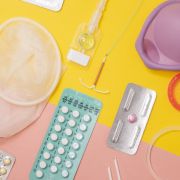Daily Aspirin; This Simple Solution Saves Pregnant Women’s Lives
Low-Dose Aspirin in Pregnancy reduces the risk of preeclampsia.
She had the worst headache of her life. The labor and delivery nurse’s face turned white as she checked her blood pressure. 200/120. These pressures were way beyond the critical range. As the team scrambled to start life-saving Magnesium sulfate medication, she suffered an eclamptic seizure.
She was only 26 weeks pregnant, and her life was in imminent jeopardy. The doctors recommended immediate delivery. Her baby survived the emergency c section but spent the first three months in the neonatal care unit.
Now that she is pregnant again. She wants to know how to reduce her risk.
Reducing the rate of preeclampsia in pregnant women through daily low-dose aspirin in high-risk patients may save lives and reduce the risk of poor pregnancy outcomes.
The American College of Obstetricians and Gynecologists (ACOG) and the US Preventative Services Task Force (USPSTF) are two leading medical associations that recommend daily low-dose aspirin for women with an increased risk of developing preeclampsia during pregnancy. Low-dose aspirin is an inexpensive and easily-accessible medication that lowers the risk of preeclampsia in high-risk women.
What is preeclampsia?
Preeclampsia is a common blood pressure disorder affecting 2–8% of pregnancies worldwide. Preeclampsia is the cause of 12% of maternal deaths. The USPSTF reports one-third of severe obstetric complications and 15% of preterm births in the United States arise from preeclampsia.
Preeclampsia is a leading cause of US maternal deaths, severe maternal morbidity, maternal intensive care admissions, cesarean section, and prematurity. Each year, preeclampsia and other pregnancy blood pressure disorders cause over 70,000 maternal and 500,000 fetal deaths worldwide.
Preeclampsia is diagnosed when high blood pressure occurs after the 20th week of pregnancy in conjunction with other signs and symptoms. Symptoms include headache, right upper abdominal pain, or visual changes. Signs include swelling, weight gain, urine protein leakage, or fluid retention in the lungs. Lab work may show low platelets, poor kidney function, or an elevation in liver enzymes.
Preeclampsia risk factors include:
- Previous pregnancy complicated by preeclampsia
- Chronic hypertension
- Pregestational diabetes mellitus
- Antiphospholipid syndrome
- Obesity
- Advanced maternal age
- Young maternal age
- Racial disparities — Black women are at increased risk of developing pregnancy-related blood pressure complications.
- Underlying kidney disease
- Pregnancies from assisted reproductive technologies

Low-dose aspirin reduces the risk of preeclampsia
The USPSTF and ACOG recommend the use of low-dose aspirin for women at risk of developing preeclampsia. Any pregnant woman with one or more of the above risk factors may benefit from this low-cost, low-risk intervention to reduce their pregnancy hypertension risk.
The current clinical trial data shows daily low-dose aspirin reduces the risk of preeclampsia by 24%. The recommendation is to begin low-dose aspirin (81 mg/day) between 12 weeks and 28 weeks of gestation and continue daily until delivery.
The studies also show aspirin use in pregnancy is safe with a low risk to mom and baby. A USPSTF meta-analysis did not show aspirin increased the risk for bleeding complications such as placental abruption, postpartum hemorrhage, or fetal intracranial bleeding.
The underlying cause of preeclampsia is unknown, but we know it is a complex multisystem inflammatory syndrome. Low-dose aspirin has anti-inflammatory, antiangiogenesis, and antiplatelet properties. These unique features may account for the beneficial effects on placenta development and placenta perfusion.
An aspirin a day keeps preeclampsia away
Scientists continue to study preeclampsia. Researchers are looking to understand the origins and triggers. Medical studies attempt to find reliable biomarkers and improve diagnostic tools.
In the meantime, we can reduce the risk of preeclampsia by encouraging the daily low-dose aspirin in women who have an increased risk for high blood pressure in pregnancy.
Thank you to BeingWell for publishing this article on Medium.
Article originally published on Medika Life.
Thanks to Robert Turner.
Blog Author: Dr. Jeff Livingston
Main Blog Photo By: Prostock-Studio Istock by Getty












